The Culture of Fitness: An Evolution from Ancient Gymnasia to Contemporary Training Facilities
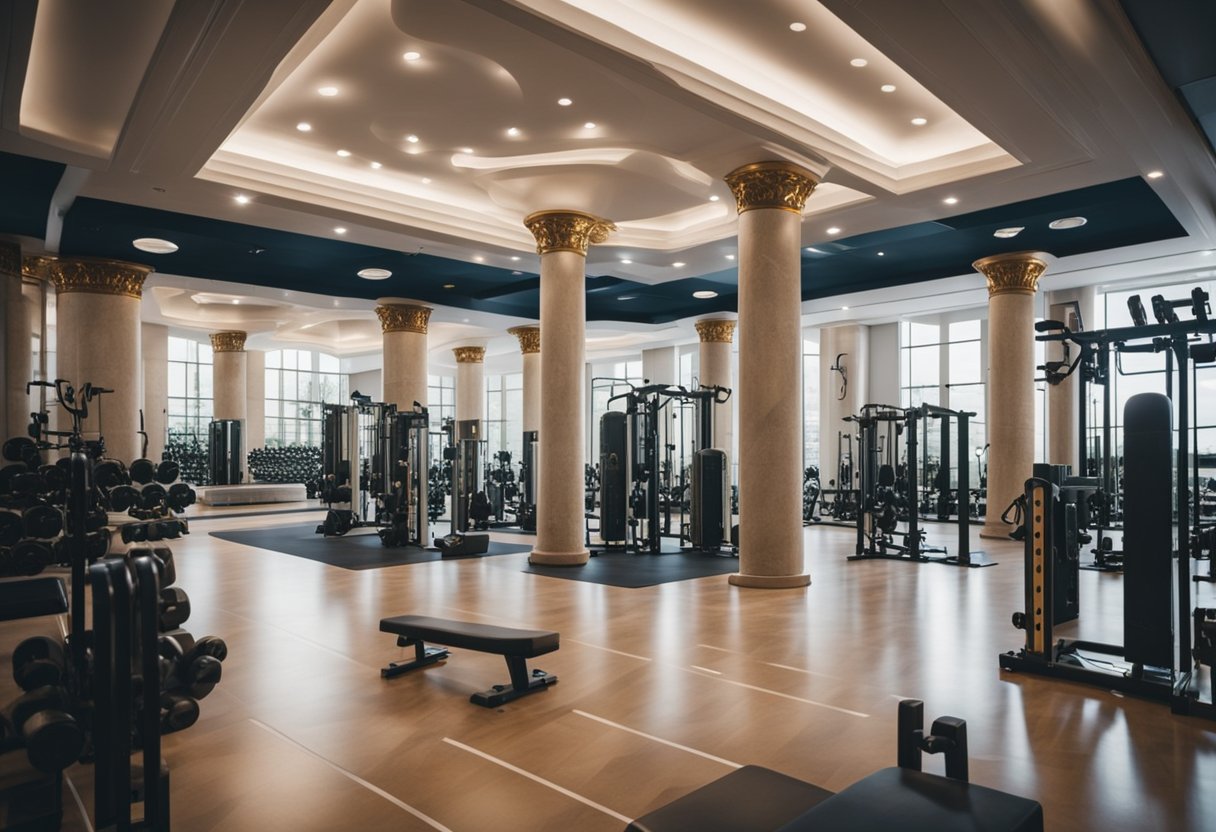
Updated On: April 20, 2024 by Panseih Gharib
The culture of fitness is a journey through time that traces the evolution of exercise from its inception to the all-encompassing wellness phenomenon it is today. The origins of structured physical training can be found in the ancient gymnasia of Greece, hallowed grounds where athletics and intellectual pursuits coexisted. These early institutions laid the foundation for physical fitness, emphasising the development of both body and mind. As the concept of exercise travelled through history, it was shaped by military training needs, thus contributing to the intricate tapestry of today’s fitness landscape.
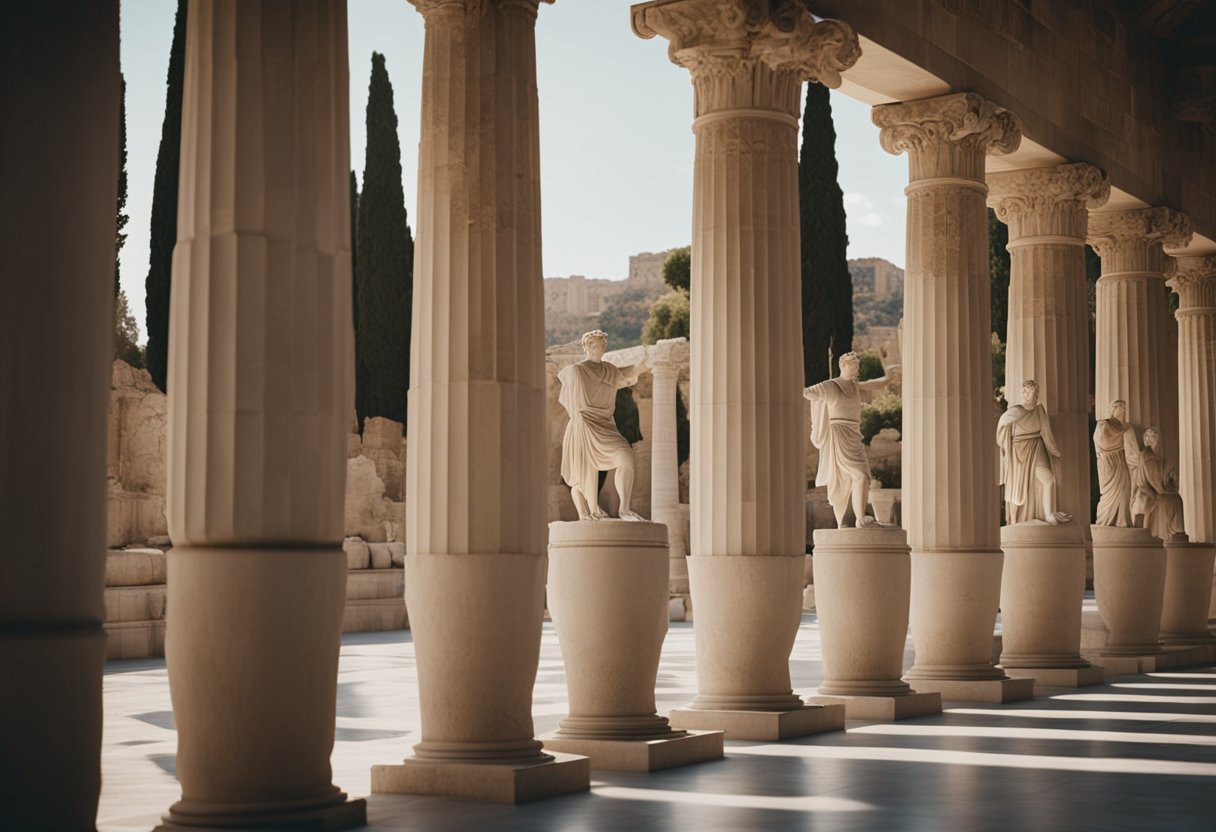
Over the centuries, physical training has undergone a metamorphosis, branching out from the exclusive arenas of military preparation and aristocratic leisure into the accessible public health movement. The gymnasium has transformed from being a communal centre of ancient societies to a modern haven for health enthusiasts. This transformation is a reflection of society’s shifting values toward health and wellbeing. In the modern age, gyms and fitness centres stand at the forefront of a global industry dedicated to enabling individuals to achieve personal health goals, offering diverse and inclusive training methodologies that cater to various populations.
The Roots of Physical Culture
The origins of physical fitness lie deeply entrenched in the annals of history, where ancient civilisations recognised the value of physical culture in society. It was more than just training the body; it was about cultivating the mind, societal values, and philosophies that would echo through the ages.
Ancient Gymnasia and Philosophy
In Ancient Greece, gymnasia were not merely places for physical exercise but also for nurturing the intellect and spirit. Philosophers like Plato and Aristotle espoused the virtues of physical fitness as integral to the development of an individual’s character and intellect. Plato himself was an accomplished wrestler and emphasised the importance of physical education in his Academy, one of the earliest institutions for higher learning.
Rise of Sport in Ancient Greece
Sport in Ancient Greece went hand-in-hand with cultural festivals and religious ceremonies. Athens and Sparta encapsulated the spectrum of Greek athletic ideology – Athens favoured a more balanced approach to physical culture, while Sparta was renowned for its rigorous military training. The Olympic Games, started in 776 BCE, became the pinnacle of athletic competition and a means for Greeks from every city-state to showcase their physical prowess.
Physical Education Through the Ages
Physical education has evolved significantly since its inception in ancient societies. Rome adopted Greek physical education practices and introduced them into their curriculum, recognising the importance of a sound mind in a sound body. Throughout the centuries, the understanding of physical education’s value has fluctuated, but its essential concepts remain ingrained in the fabric of education systems around the world, underpinning modern approaches to health and fitness.
Physical Training in Military History
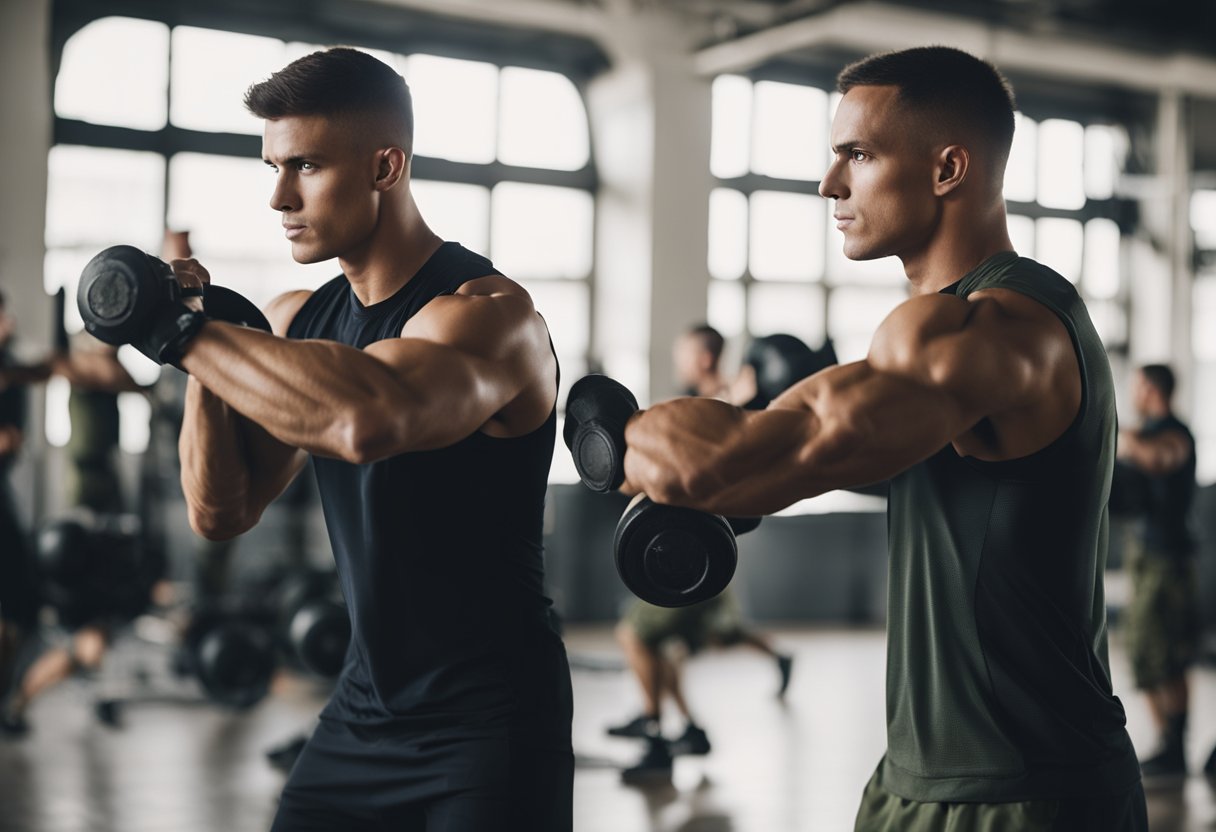
Throughout the ages, military organisations have consistently emphasised physical fitness as a cornerstone of effective combat readiness. From the ancient armies of Persia to the disciplined legions of Rome, stringent training regimens have been integral in shaping soldiers and gladiators into formidable forces.
Soldiers and Athleticism
Physical prowess has always been a prized attribute in soldiers. In ancient Persia, for example, the elite units, known as the ‘Immortals’, were renowned for their endurance and strength. Training for these soldiers was rigorous, ensuring that they could endure long marches and heavy combat. Training often included activities like archery, wrestling, and horseback riding, designed to enhance their operational effectiveness across diverse terrains and combat scenarios.
The Romans further refined military training, seeing it as essential for the might of their empire. Legionaries were subjected to strict physical regimens, which involved marching for long distances bearing heavy packs, construction projects, and simulated combat. These activities not only honed their physical capabilities but also instilled discipline and unit cohesion.
Gladiators and Rome’s Influence
Gladiators, perhaps Rome’s most iconic warriors, underwent specialized training to entertain the masses with their prowess in combat. Rome’s influence on physical training can be seen in the arenas where these fighters displayed their training. Under the watchful eyes of a lanista, gladiators would practise skills relevant to their fighting style, involving weapons training, strength building, and tactical manoeuvring. Although they were entertainers, the rigorous nature of their preparation was akin to that of soldiers, contributing to Rome’s culture of physical excellence.
Their training was no mere spectacle; it showcased the military efficiency and might that the Romans valued, and it trickled down into civilian life as well, influencing the way physical training was perceived across the empire. The legacy of Rome’s dedication to physical fitness still echoes in modern military training, where a similar blend of discipline, strength, and strategy is crucial for the modern warrior.
Evolution of Gymnastics and Strength Training
In tracing the progression of physical training, we observe a transformative journey from classical practices to modern-day strength sports. Gymnastics and strength training have both experienced significant developments that reflect our enduring quest for physical excellence.
Classical to Renaissance Gymnastics
In Ancient Greece, gymnastics was integral to a well-rounded education, fostering physical and mental strength. Participants engaged in activities like discus throwing and wrestling, which were central to the classic gymnasium. Over time, these practices evolved, finding new expressions during the Renaissance. The era saw a revival of classical gymnastics, as European scholars advocated for the importance of physical exercise in humanistic education.
Bodybuilding and Strength Sports Emergence
The 19th century heralded the birth of modern bodybuilding, with figures such as Eugen Sandow, the “father of modern bodybuilding,” emphasizing the aesthetic potential of the human form. Harnessing the spectacle of strength, Sandow’s demonstrations laid the groundwork for contemporary strength sports. The pursuit of might transformed into an organized spectacle—bodybuilding competitions and strength training became synonymous with the ultimate demonstration of vigor and discipline.
The Public Health Perspective
In approaching fitness from a public health perspective, we must consider its vital role in societal well-being and education. The evolution of exercise spaces—from ancient gymnasia to modern gyms—reflects the enduring connection between physical health and community.
Gymnasia as Social and Educational Hubs
Gymnasia in ancient Greece were more than mere locations for physical activity; they were epicentres for socialising and learning. These institutions played a significant role in the pedagogy of the youth, frequently housing libraries and spaces for intellectual discourse. They also championed the works of scholars like Hippocrates and Galen, whose insights into medicine and anatomy greatly influenced public health principles.
Historic Public Health Movements
Throughout history, public health movements have leveraged the concept of fitness as a tool to enhance societal health. During the 18th and 19th centuries, physical education became a point of emphasis, both for individual well-being and for fortifying populations against diseases. Endeavours to incorporate exercise into the school curriculum introduced physical exercise and made significant strides in associating fitness with personal and public health.
Rise of Modern Fitness and Health Clubs
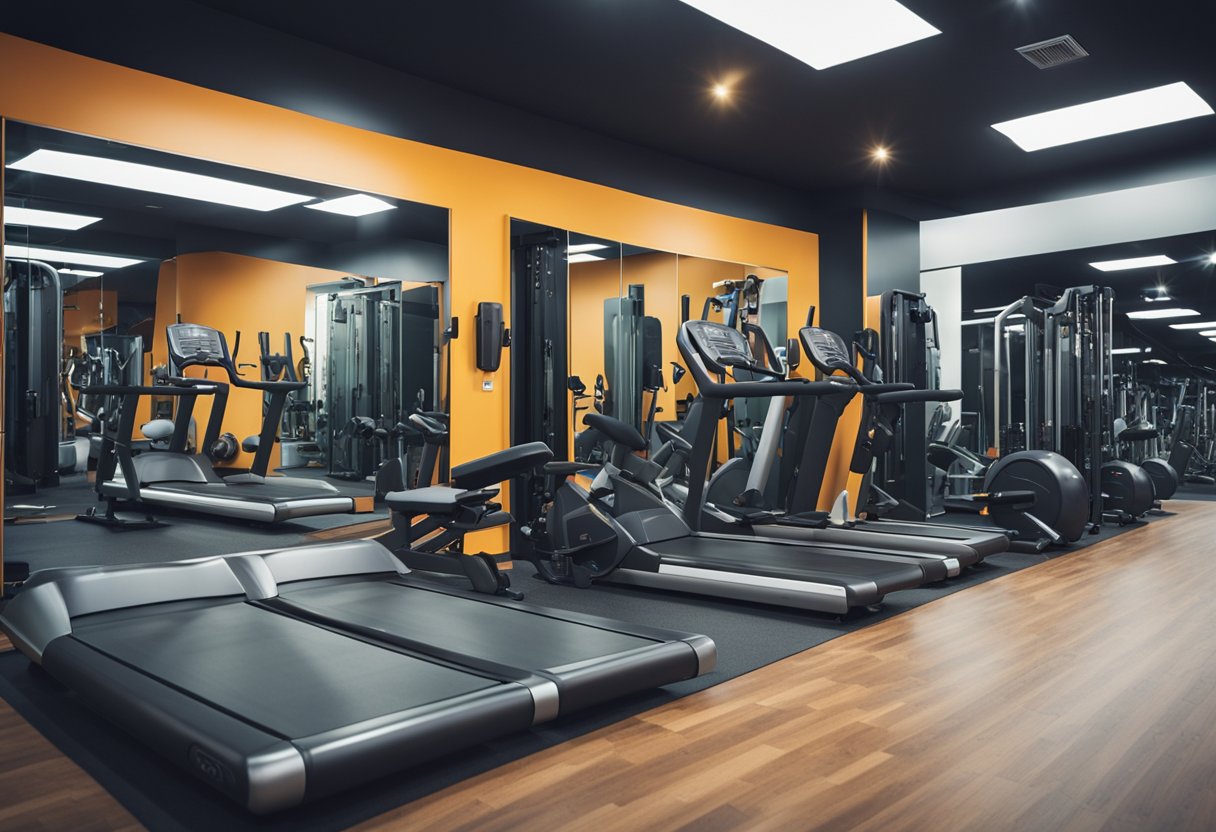
As we chart the transition from rudimentary exercise to the establishment of dedicated fitness facilities, one observes a drastic transformation in the infrastructure and culture surrounding physical activity.
19th Century Physical Culture
The genesis of modern fitness culture can be traced back to the 19th century, a period marked by an emphasis on physical education and the advent of structured personal training environments. Notably, Professor Attila became a pioneer in this domain, setting up his first gymnasium in Brussels and eventually founding Attila’s Athletic Studio and School of Physical Culture in New York.
Boom of the Health Clubs in the 20th Century
20th century health clubs burgeoned post-World War II, reflecting society’s growing preoccupation with health, physique, and wellness. The landscape of fitness saw a substantial boom, with entities like Gold’s Gym and 24 Hour Fitness catalysing a vibrant health club scene. Accessibility and variety grew—gyms began offering a plethora of exercise equipment and classes, embodying the diversity of the evolving fitness culture.
Aerobics and the Fitness Revolution
In this section, we’ll be examining the pivotal role of aerobics in the fitness revolution of the 20th century and recognising key figures that shaped this transformative era in fitness culture.
20th Century: The Aerobics Movement
The aerobics movement became the emblem of fitness in the 20th century, marking a shift from predominantly strength-based training to include cardiovascular health. Initially coined by Dr. Kenneth H. Cooper in 1968, aerobics emphasised rhythmic exercises aimed at improving the efficiency of the body’s intake of oxygen. It quickly became a staple in fitness routines around the world, riding the wave of the broader fitness revolution.
- Popularisation: The surge in aerobic exercise gained momentum with the introduction of Jane Fonda’s workout videos in the 1980s. Her influence brought aerobics into the mainstream and homes across the globe, hitting two birds with one stone – fitness became accessible and trendy.
Influential Figures in Fitness
While discussing aerobics, it’s crucial to also highlight key personalities who injected glamour and energy into the fitness culture:
- Jane Fonda: With her aerobic workout tapes, Fonda essentially put the aerobics movement on the map, making her one of the most influential figures in the fitness industry.
- Arnold Schwarzenegger: A beacon of the synergy between bodybuilding and general fitness, Schwarzenegger propelled the fitness industry forward, showcasing the appeal of a well-conditioned physique beyond competitive bodybuilding platforms.
Exercise is not just about the physical benefits; it’s about mental wellbeing too. The release of endorphins during aerobic activity contributes to the “feel-good” sensation often dubbed as the runner’s high. It’s this holistic approach to health – the symbiosis of the body and mind – that framed the fitness revolution of the 20th century.
Through aerobic exercises and influential figures promoting the culture, the fitness revolution reshaped how we perceive and pursue health and well-being, paving the way for the dynamic, inclusive fitness industry of today.
Role of Gender and Diversity in Fitness
In the evolving landscape of fitness, understanding the role of gender and diversity is crucial. These aspects deeply influence the culture of fitness and personal exercise experiences.
Women’s Journey in Fitness Culture
Historically, women faced societal barriers in accessing fitness spaces, which were predominantly male-oriented. The early gymnasia of ancient cultures were often exclusive to men. Today, women actively shape fitness culture, from participating in community sports to being leaders in fitness instruction and movement. The integration of gender diversity in sports has become a prominent feature, challenging traditional conceptions of gender in these spaces. Fitness centres commonly Craft policies and programmes promoting inclusivity, allowing women to engage comfortably and confidently in these environments.
The Inclusion of Minority Groups
Emphasising the importance of minority inclusion has influenced the development of modern gyms and fitness practices. Traditional fitness environments often missed the nuances of cultural diversity, but the recent focus has been on creating spaces where individuals from all backgrounds feel welcome. This change positively affects the overall health and well-being of communities as people of various racial and ethnic groups bring their unique perspectives to fitness. The expansion has provided fertile ground for the industry to grow, encompassing a broader spectrum of activities that cater to different cultural preferences and needs. Efforts aiming to reduce disparities in physical activity ensure that everyone, regardless of their background, can access the lifelong benefits of fitness.
Technological and Cultural Shifts
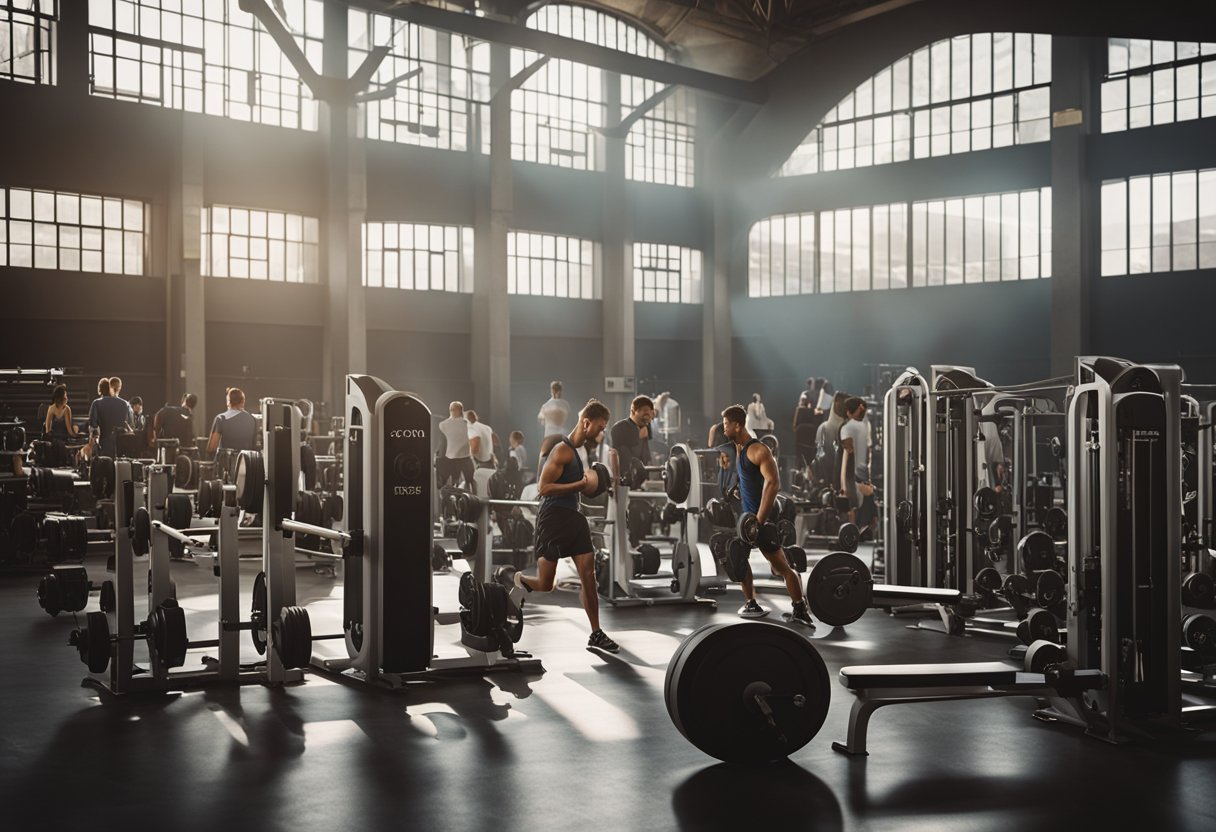
In the realm of fitness, the digital era has significantly altered how we engage with physical activity and perceive health. The rise of technology and shifts in popular culture have redefined our approach to maintaining an active lifestyle.
Fitness Technology Advancements
The technological landscape within the fitness industry has been revolutionised by the introduction of fitness apps and wearable devices. We now have access to a multitude of applications that track our daily activities, monitor our health stats, and provide personalised workout plans. For instance, apps like MyFitnessPal help us monitor our caloric intake and exercise, while Strava allows us to track cycling and running routes, providing a competitive, social element to our workouts.
Wearable technology such as Fitbit and Garmin devices make it easier for us to obtain real-time data on our heart rates, sleep patterns, and activity levels. This immediacy and precision of information have significantly changed how we tailor our fitness regimes and understand our bodies.
Impact of Media and Popular Culture
Popular culture, propelled by social media platforms, has played a pivotal role in shaping the public’s engagement with fitness. Social media sites like Instagram and YouTube not only offer instructional content but also serve as platforms for influencers who inspire and motivate people to adopt healthier lifestyles. The visibility of workouts and health trends online has also contributed to the spread of exercise movements, from high-intensity interval training (HIIT) to yoga and mindful meditation.
Our relationship with exercise has been transformed by the media’s portrayal, with television shows and films often emphasizing the importance of fitness as part of a successful, aspirational lifestyle. This cultural shift, alongside technological advancements, encourages us to remain committed to our health goals, weaving fitness into the narrative of our everyday lives.
Adaptations Amidst Global Challenges

In recent years, the fitness industry has faced numerous global challenges that have necessitated significant adaptations. These include the constraints imposed by the COVID-19 pandemic and the pressing need to operate sustainably. We will consider how fitness practices and gym environments have transformed in response to these trials.
Fitness During the COVID-19 Pandemic
When the COVID-19 pandemic brought the world to a standstill, the fitness industry was compelled to reinvent itself. Lockdowns and social distancing measures meant that traditional gym settings were no longer accessible, leading to a surge in online fitness classes and home workout solutions. Digital platforms became the new gymnasia, connecting trainers and clients through livestreams and on-demand videos. This digital shift not only provided a safe alternative for maintaining physical health but also showcased the sector’s resilience.
The health and safety protocols within gyms that were once open to the public underwent considerable change. Sanitisation stations, spatial restructuring for social distancing, and contactless systems became the norm. This rapid adaptation was fundamental for the gyms that could remain operational, ensuring they met guidelines and kept patrons safe.
Environmental Considerations for Gyms
Sustainability is another frontier where gyms are actively making strides. Modern facilities are integrating eco-friendly practices by utilising renewable energy, installing efficient lighting, and opting for recyclable materials. Initiatives like using biodegradable cleaning products and implementing water conservation methods are just the beginning of the industry’s sustainability journey.
Our evolution reflects these adaptations, promoting health and safety practices at the front of gym culture, underscoring the importance of sustainability, and embracing technology for continuous engagement. Through these actions, we’re not only looking after individual health but also the well-being of our planet.
The Business of Fitness

The commercial gym industry has witnessed substantial growth, evolving into a lucrative sector. Fitness has also transcended the realm of mere activity, morphing into a lifestyle brand that resonates with consumers on a personal level.
The Commercial Gym Industry
Commercial gyms have become cornerstones of the fitness industry, turning well-being into a viable business model. These gyms offer an array of services and memberships tailored to different consumer needs. Flexible offerings range from low-cost, high-volume gyms to boutique studios that emphasise personal coaching and specialised classes. Marketing strategies in this sphere are dynamic, heavily relying on branding to differentiate in a crowded market.
- Low-Cost Gyms: They thrive on volume, providing basic facilities with competitive pricing.
- Boutique Studios: They cater to niche markets, offering premium services at a higher cost.
The business models vary, with some offering pay-as-you-go options while others rely on subscriptions, ensuring a steady revenue stream. Branding is critical; a gym’s brand often promotes a lifestyle promising transformation and community, not just equipment and exercise classes.
Fitness as a Lifestyle Brand
We’ve noted fitness evolving into a lifestyle brand, with gyms and fitness companies creating a complete ecosystem for their clientele. Emphasising the holistic nature of fitness:
- Apparel and Equipment: Branded apparel and equipment serve as extensions of the gym’s identity.
- Nutrition and Supplements: Many gyms offer their line of nutritional products, aligning with the brand’s health and fitness values.
This approach solidifies customer loyalty and creates additional revenue streams. Marketing plays a pivotal role in this, with a seamless narrative across all platforms reinforcing the fitness brand. Social media campaigns, influencer partnerships, and community events are crucial facets of this strategy. The narrative isn’t just about selling a membership; it’s about selling an aspiration, a part of an exclusive club that embodies a particular ethos and lifestyle.
Frequently Asked Questions

In this section, we address commonly asked questions about the evolution of the gym from its inception in ancient civilisations to its current role in modern society.
What are the origins of gymnasiums in ancient civilisations?
Gymnasiums trace back to ancient Greece, where they functioned as training facilities for competitors in public games. They were also hubs for socialising and intellectual discussion.
How has the perception of physical exercise changed from ancient times to the modern era?
Originally, exercise was a pursuit of the elite in ancient societies, closely tied with military training and philosophical ideals. Today, it is widely embraced for health and fitness by all societal levels.
What influences led to the widespread popularity of gymnasiums in contemporary society?
The industrial revolution and subsequent urbanisation played a significant role in promoting communal exercise spaces, meeting the demands of a more sedentary workforce seeking organised physical activity.
Could you trace the evolution of gymnasium culture through the ages?
The concept of the gymnasium evolved from the Greek model of combined physical and intellectual education to a more singular focus on physical fitness, highlighted by the global fitness movement of the 20th century.
What key developments signified the transformation of fitness practices from ancient gymnasia to today’s gyms?
Key developments include the advent of fitness equipment like the Gymnasticon in the 18th century and the later proliferation of machine-based and aerobic exercises in the 20th century.
In what ways did gymnasium culture in ancient Greece differ from today’s gym culture?
Ancient Greek gymnasiums were male-only venues used for education and philosophical discourse, contrasting with today’s inclusive fitness centres that promote physical well-being and are often equipped with a variety of specialised training facilities.






